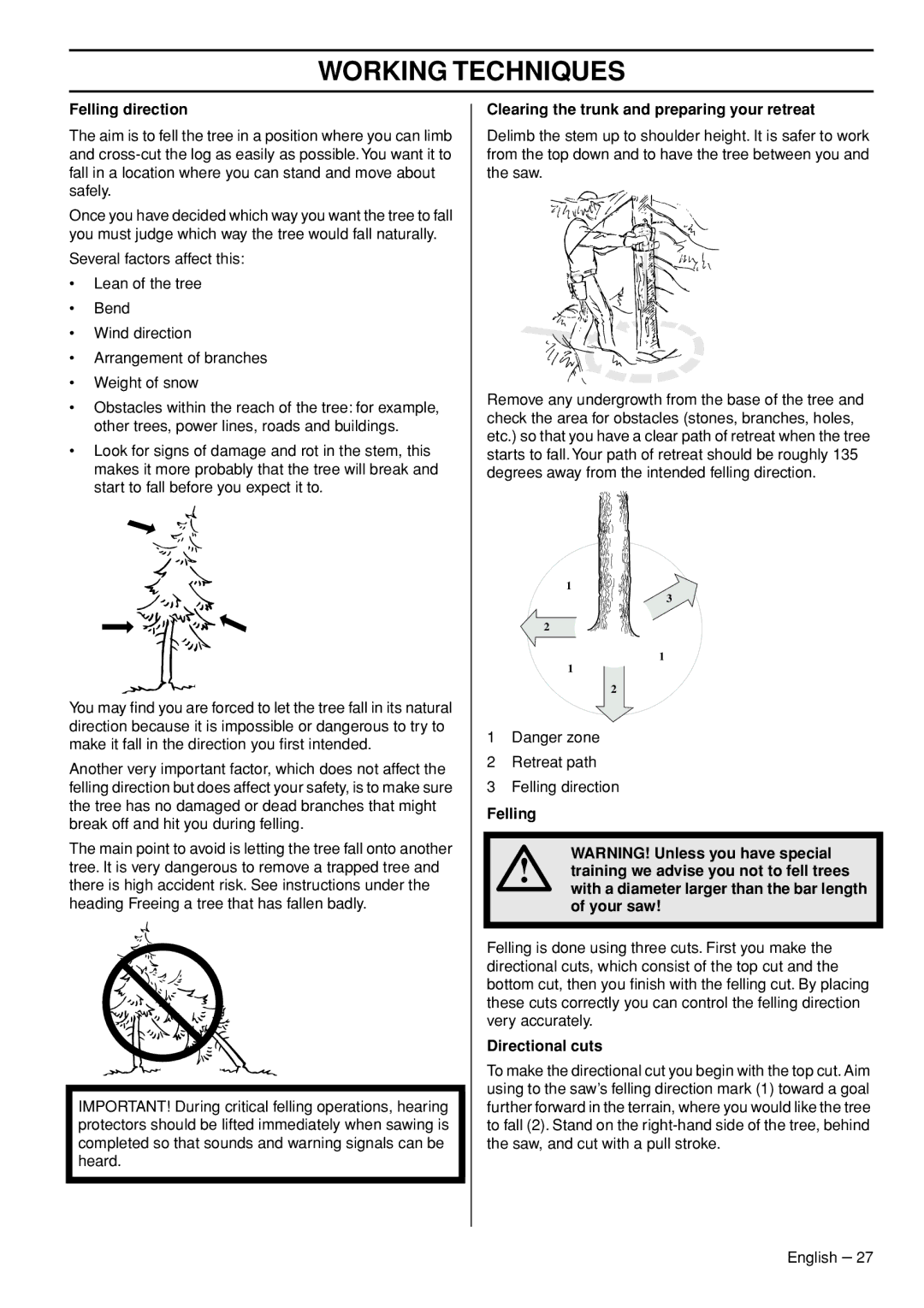1153181-26 specifications
The Husqvarna 1153181-26 is a highly regarded chainsaw that blends performance, reliability, and user-friendly features. Known for its robustness, this model is designed to meet the needs of both professional users and knowledgeable homeowners. With its powerful engine and innovative technology, the 1153181-26 stands out in the competitive landscape of outdoor power tools.One of the standout features of the Husqvarna 1153181-26 is its X-Torq engine technology, which significantly reduces fuel consumption and emissions without compromising performance. This two-stroke engine generates substantial power, enabling smooth cutting encounters even with tougher materials. The fuel efficiency achieved through this technology makes it an environmentally friendly option, aligning with modern sustainability goals.
The chainsaw is equipped with an automatic oiling system that ensures proper lubrication of the bar and chain during operation. This feature prolongs the life of the saw and enhances overall cutting performance. Additionally, the adjustable oil pump allows users to control the oil flow according to their needs, making it adaptable for different tasks and conditions.
Another notable characteristic is the lightweight design of the 1153181-26, which improves maneuverability and reduces user fatigue during extended periods of use. The ergonomically designed handle provides a comfortable grip, ensuring better control and precision while cutting. Coupled with a low vibration system, this model minimizes operator fatigue, making it suitable for both novice and seasoned users.
Safety is a core principle in the design of the Husqvarna 1153181-26. It features a chain brake that stops the chain in the event of kickback, protecting the user from potential injuries. The saw also incorporates a protective cover over the chain, safeguarding it during storage and transport.
In conclusion, the Husqvarna 1153181-26 is a versatile and dependable chainsaw that excels in power, efficiency, and safety. With its state-of-the-art features like the X-Torq engine, automatic oiling system, and ergonomic design, it appeals to anyone looking for a reliable tool for outdoor cutting tasks. Whether trimming branches or felling trees, this model provides the performance and comfort needed to accomplish a variety of tasks effectively.

